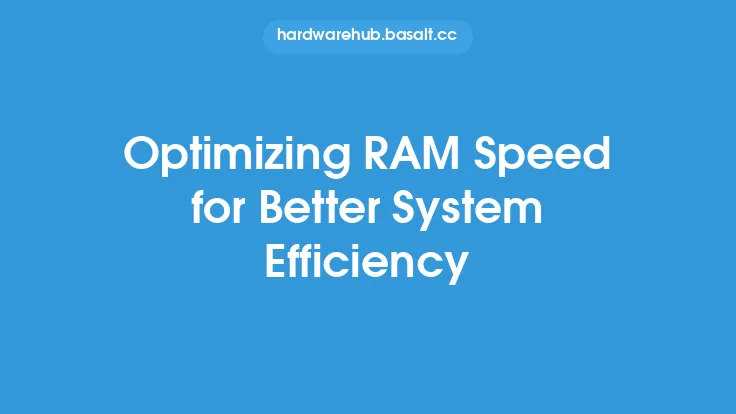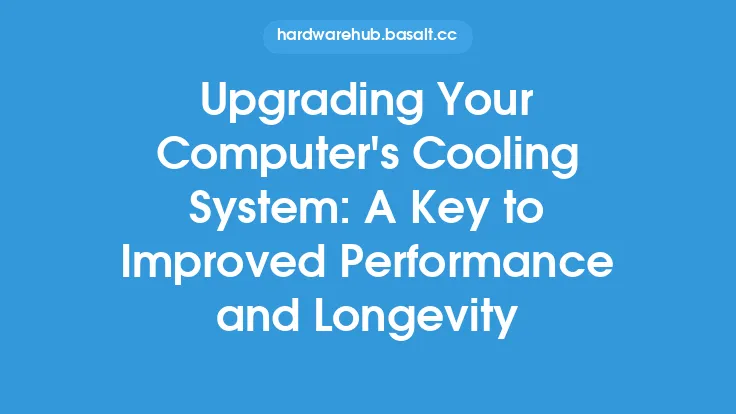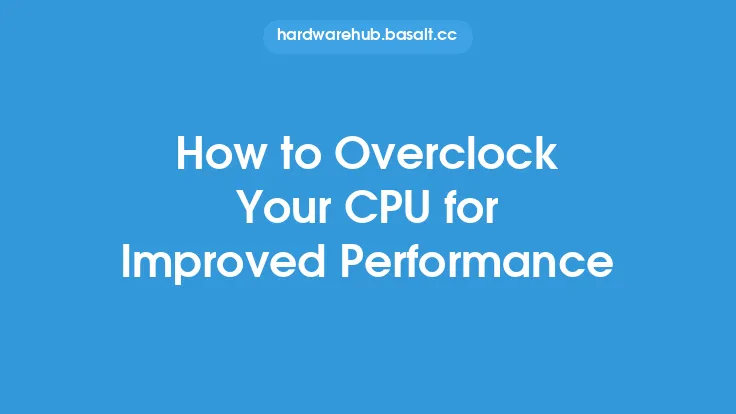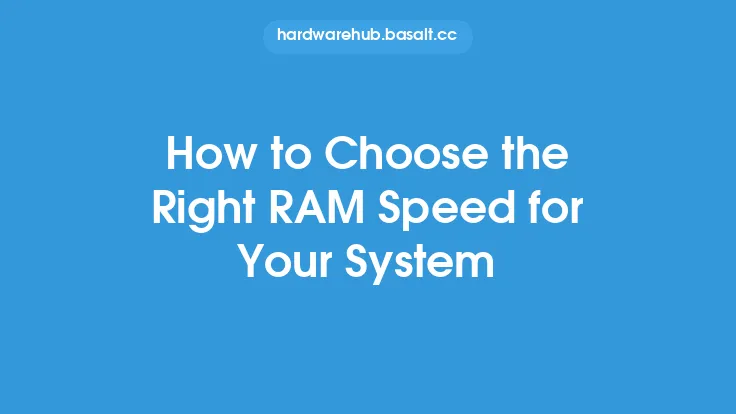When it comes to upgrading your computer, the goal is often to improve its speed and efficiency. However, simply installing new hardware is not enough to achieve optimal performance. To truly streamline your system, you need to consider a variety of factors, from the operating system and software to the hardware configuration and user settings. In this article, we will explore the key aspects of post-upgrade optimization, providing you with the knowledge and tools to get the most out of your upgraded computer.
Understanding System Bottlenecks
One of the primary challenges in optimizing a computer system is identifying the bottlenecks that can slow it down. A bottleneck is a component or process that limits the overall performance of the system. Common bottlenecks include the processor, memory, storage, and graphics card. To identify bottlenecks, you can use system monitoring tools, such as the Task Manager in Windows or the Activity Monitor in macOS. These tools provide detailed information about system resource usage, allowing you to pinpoint areas where performance is being hindered.
Optimizing the Operating System
The operating system (OS) plays a critical role in determining the overall performance of your computer. To optimize the OS, you should ensure that it is up-to-date, with all the latest patches and updates installed. You should also consider adjusting the OS settings to prioritize performance. For example, in Windows, you can disable unnecessary startup programs and services, while in macOS, you can adjust the energy saver settings to optimize performance. Additionally, you can consider upgrading to a 64-bit version of the OS, which can provide improved performance and support for larger amounts of memory.
Configuring Hardware Settings
Hardware configuration is another crucial aspect of post-upgrade optimization. You should ensure that all hardware components are properly installed and configured. This includes setting the correct BIOS settings, configuring the storage drives, and optimizing the graphics card settings. For example, you can adjust the BIOS settings to prioritize the processor or memory, while also configuring the storage drives to use the fastest available interface. Additionally, you can optimize the graphics card settings to improve performance in graphics-intensive applications.
Managing Software and Applications
Software and applications can also have a significant impact on system performance. To optimize software and applications, you should ensure that they are up-to-date, with all the latest patches and updates installed. You should also consider uninstalling unnecessary software and applications, which can consume system resources and slow down the computer. Additionally, you can consider using software optimization tools, such as disk cleanup and registry cleaners, to improve system performance.
Disk Management and Storage
Disk management and storage are critical aspects of post-upgrade optimization. You should ensure that the storage drives are properly configured and optimized for performance. This includes setting the correct disk format, configuring the disk partitions, and optimizing the disk storage settings. For example, you can use a solid-state drive (SSD) as the primary drive, which can provide faster storage and improved performance. Additionally, you can consider using disk management tools, such as disk defragmentation and disk cleanup, to improve disk performance.
Power Management and Cooling
Power management and cooling are also important aspects of post-upgrade optimization. You should ensure that the computer is properly cooled, with adequate airflow and heat dissipation. This includes cleaning dust from the fans and heat sinks, as well as ensuring that the computer is placed in a well-ventilated area. Additionally, you can consider using power management tools, such as power saving modes and sleep settings, to reduce power consumption and improve system efficiency.
Monitoring and Maintenance
Finally, monitoring and maintenance are critical aspects of post-upgrade optimization. You should regularly monitor system performance, using tools such as system monitoring software and benchmarking tests. This will help you identify areas where performance is being hindered and make adjustments as needed. Additionally, you should perform regular maintenance tasks, such as disk cleanup and virus scans, to ensure that the system remains optimized and secure.
Best Practices for Post-Upgrade Optimization
To get the most out of your upgraded computer, it is essential to follow best practices for post-upgrade optimization. This includes regularly updating the OS and software, configuring hardware settings for optimal performance, and managing software and applications to minimize system resource usage. Additionally, you should monitor system performance and perform regular maintenance tasks to ensure that the system remains optimized and secure. By following these best practices, you can ensure that your upgraded computer provides optimal performance and efficiency.
Conclusion
In conclusion, streamlining your system for improved speed and efficiency requires a comprehensive approach that considers all aspects of the computer, from the OS and software to the hardware configuration and user settings. By understanding system bottlenecks, optimizing the OS, configuring hardware settings, managing software and applications, and monitoring and maintaining the system, you can ensure that your upgraded computer provides optimal performance and efficiency. Whether you are a casual user or a power user, following the tips and best practices outlined in this article will help you get the most out of your upgraded computer and enjoy a faster, more efficient computing experience.





